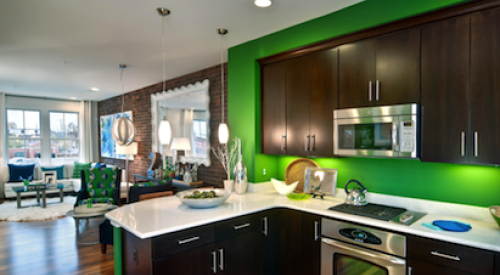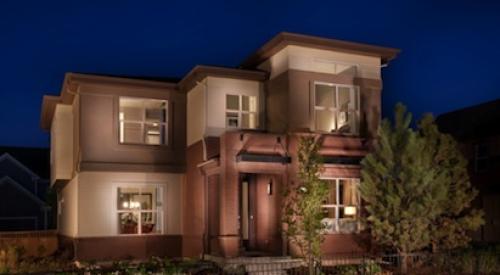The high cost of land in many parts of the country is forcing builders and architects to be far more creative with their home designs. They’ve stepped up to that challenge, developing detached product at higher densities without sacrificing livability or privacy. Since many buyers prefer a fee-simple detached home to a townhome or condominium, these projects tend to sell out quickly, and often at higher prices.
Architect Alan Scales, principal of KTGY Architecture + Planning, in Irvine, Calif., says that high-density detached housing is a particularly strong trend in that state. Builders are “packing in more house—often 10, 12, or 13 DUA in a two-story detached home,” Scales says. Orange County, once an emblem of sprawl, is, he adds, urbanizing and accepting higher densities.
The Small Lot Ordinance (SLO) enacted by the City of Los Angeles in 2005 has provided the impetus for many high-density detached projects. Other cities have followed with their own versions of the SLO, including Costa Mesa, Merced, Modesto, and San Diego as well as Los Angeles County. The ordinance allows underutilized land in multifamily and commercial areas to be developed as fee-simple houses.
One of the biggest challenges in pushing density with detached homes is accommodating parking requirements while still creating livable floor plans and desirable site plans, says Pete Reeb, a principal in the San Diego office of John Burns Real Estate Consulting. “Some of the biggest buyer objections to high-density single-family detached urban product—which can also lower home values and slow sales rates—are lack of driveways; lack of private, enclosed backyards; no sidewalks; and narrower alleys rather than full-width streets,” Reeb says. “Many projects have zero-lot-line plotted homes with only a side yard and no backyard.”
Solutions must be site- and lot-specific. While some projects in Los Angeles consist of three-story detached homes at 30-plus units per acre, that isn’t the norm everywhere. In some areas, 5 or 6 DUA is considered high-density. “You can’t plug and play a prototype,” Scales says. “It has to be a bit more married to its location.”












